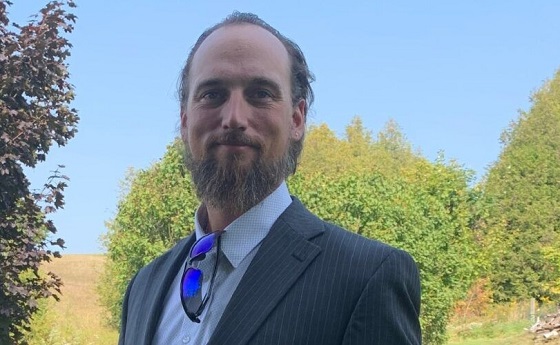COVID-19
Learning loss piles up alongside snow while ‘e-learning’ collects dust

From the Fraser Institute
By Alex Whalen and Paige MacPherson
During COVID school closures, students in the province missed at least 125 days of school between March 2020 and February 2022, more than any other province (except Ontario), generating a significant learning loss from which students have not caught up.
In a world increasingly connected by technology, and given the Nova Scotia government recently spent tens of millions of dollars enabling at-home learning, one might think that students would seamlessly shift to online learning during the recent snowstorms to avoid losing crucial instructional time. Unfortunately, that’s not happening.
During COVID school closures, the Nova Scotia and federal governments spent at least $31.5 million dollars on “virtual school” and other technological upgrades so students could, according to the provincial government, “succeed, even in an at-home learning environment.”
Unfortunately, the electronic learning infrastructure—which includes Chromebooks, laptops and iPads for students and teachers, and additional support and new teachers for Nova Scotia Virtual School—is collecting dust in a corner while Nova Scotia kids are falling further behind.
This isn’t some blip in an otherwise strong record of instructional time for Nova Scotia students. During COVID school closures, students in the province missed at least 125 days of school between March 2020 and February 2022, more than any other province (except Ontario), generating a significant learning loss from which students have not caught up.
Indeed, according to the latest results (2022) from the Programme for International Assessment (PISA), the gold standard of testing worldwide, Nova Scotia 15-year-olds trail the Canadian average in reading by 18 points and trail the Canadian average in math by 27 points. For context, PISA characterizes a 20-point drop as one year of lost learning.
Moreover, between 2003 and 2022, Nova Scotia student performance in reading dropped by 24 points—more than one year of learning loss—and dropped by 45 points in math. In other words, in math, 15-year-old Nova Scotia students today are more than two years behind where Nova Scotia 15-year-olds were in 2003.
These troubling trends underscore the need to put the existing e-learning infrastructure to work. During a recent two-week period, students in the Cape Breton-Victoria Regional Centre for Education school district missed seven days of school due to snow. And some students missed an additional five days due to weather and power outages. That’s nearly three weeks. While more instructional time is not a silver bullet for student success—and with power outages, e-learning is not a perfect solution—it could still make a big difference.
According to international research, missed classroom time causes learning loss and impacts children for life, reducing their life-long earnings. Nova Scotia education researcher Paul Bennett found that lost classroom time due to inclement weather compounds absenteeism and sets back student achievement and social progress.
The Houston government should ensure that Nova Scotian students have access to teacher-directed e-learning when schools are closed and, like other jurisdictions in Canada and the United States, abandon the practise of simply cancelling school due to inclement weather. It’s simply common sense. The snow may pile up, but there’s no good reason why learning loss must pile up with it. Parents are right to demand access to the e-learning they’ve already paid for through their tax dollars.
Authors:
COVID-19
Judge denies Canadian gov’t request to take away Freedom Convoy leader’s truck

From LifeSiteNews
A judge ruled that the Ontario Court of Justice is already ‘satisfied’ with Chris Barber’s sentence and taking away his very livelihood would be ‘disproportionate.’
A Canadian judge has dismissed a demand from Canadian government lawyers to seize Freedom Convoy leader Chris Barber’s “Big Red” semi-truck.
On Friday, Ontario Court of Justice Judge Heather Perkins-McVey denied the Crown’s application seeking to forfeit Barber’s truck.
She ruled that the court is already “satisfied” with Barber’s sentence and taking away his very livelihood would be “disproportionate.”
“This truck is my livelihood,” said Barber in a press release sent to LifeSiteNews.
“Trying to permanently seize it for peacefully protesting was wrong, and I’m relieved the court refused to allow that to happen,” he added.
Criminal defense lawyer Marwa Racha Younes was welcoming of the ruling as well, stating, “We find it was the right decision in the circumstances and are happy with the outcome.”
John Carpay, president of the Justice Centre for Constitutional Freedoms (JCCF), said the decision is “good news for all Canadians who cherish their Charter freedom to assemble peacefully.”
READ: Freedom Convoy protester appeals after judge dismissed challenge to frozen bank accounts
“Asset forfeiture is an extraordinary power, and it must not be used to punish Canadians for participating in peaceful protest,” he added in the press release.
As reported recently by LifeSiteNews, the Canadian government claimed that Barber’s truck is an “offence-related property” relating to his involvement in the 2022 protests against Canada’s COVID mandates.
At this time, the court ruling ends any forfeiture proceedings for the time being, however Barber will continue to try and appeal his criminal conviction and house arrest sentence.
Barber’s truck, a 2004 Kenworth long-haul he uses for business, was a focal point in the 2022 protests. He drove it to Ottawa, where it was parked for an extended period of time, but he complied when officials asked him to move it.
On October 7, 2025, after a long trial, Ontario Court Justice Perkins-McVey sentenced Barber and Tamara Lich, the other Freedom Convoy leader, to 18 months’ house arrest. They had been declared guilty of mischief for their roles as leaders of the 2022 protest against COVID mandates, and as social media influencers.
Lich and Barber have filed appeals of their own against their house arrest sentences, arguing that the trial judge did not correctly apply the law on their mischief charges.
Government lawyers for the Crown have filed an appeal of the acquittals of Lich and Barber on intimidation charges.
The pair’s convictions came after a nearly two-year trial despite the nonviolent nature of the popular movement.
COVID-19
Freedom Convoy protester appeals after judge dismissed challenge to frozen bank accounts

From LifeSiteNews
Protestor Evan Blackman’s legal team argues Trudeau’s Emergencies Act-based bank account freezes were punitive state action tied directly to protest participation.
A Freedom Convoy protester whose bank accounts were frozen by the Canadian government says a judge erred after his ruling did not consider the fact that the funds were frozen under the Emergencies Act, as grounds for a stay of proceedings.
In a press release sent out earlier this week, the Justice Centre for Constitutional Freedoms (JCCF) said that Freedom Convoy protestor Evan Blackman will challenge a court ruling in his criminal case via an appeal with the Ontario Superior Court of Justice.
“This case raises serious questions about how peaceful protest is treated in Canada and about the lasting consequences of the federal government’s unlawful use of the Emergencies Act,” noted constitutional lawyer Chris Fleury. “The freezing of protestors’ bank accounts was part of a coordinated effort to suppress dissent, and courts ought to be willing to scrutinize that conduct.”
Blackman was arrested on February 18, 2022, during the police crackdown on Freedom Convoy protests against COVID restrictions, which was authorized by the Emergencies Act (EA). The EA was put in place by former Prime Minister Justin Trudeau’s Liberal government, which claimed the protests were violent, despite no evidence that this was the case.
Blackman’s three bank accounts with TD Bank were frozen due to his participation in the Freedom Convoy, following a directive ordered by Trudeau.
As reported by LifeSiteNews, in November of this year, Blackman was convicted at his retrial even though he had been acquitted at his original trial. In 2023, Blackman’s “mischief” and “obstructing police” charges were dismissed by a judge due to lack of evidence and the “poor memory of a cop regarding key details of the alleged criminal offences.”
His retrial resulted in Blackman getting a conditional discharge along with 12 months’ probation and 122 hours of community service, along with a $200 victim fine surcharge.
After this, Blackman’s application for a stay of proceedings was dismissed by the court. He had hoped to have his stay of proceedings, under section 24(1) of the Charter of Rights and Freedoms, allowed. However, the judge ruled that the freezing of his bank accounts was legally not related to his arrest, and because of this, the stay of proceedings lacked standing.
The JCCF disagreed with this ruling, noting, it “stands in contrast to a Federal Court decision finding that the government’s invocation of the Emergencies Act was unreasonable and violated Canadians’ Charter rights, including those targeted by the financial measures used against Freedom Convoy protestors.”
As of press time, a hearing date has not been scheduled.
In 2024, Federal Court Justice Richard Mosley ruled that Trudeau was “not justified” in invoking the Emergencies Act.
In early 2022, the Freedom Convoy saw thousands of Canadians from coast to coast come to Ottawa to demand an end to COVID mandates in all forms. Despite the peaceful nature of the protest, Trudeau’s federal government enacted the EA in mid-February.
After the protesters were cleared out, which was achieved through the freezing of bank accounts of those involved without a court order as well as the physical removal and arrest of demonstrators, Trudeau revoked the EA on February 23, 2022.
-

 Bruce Dowbiggin1 day ago
Bruce Dowbiggin1 day agoHunting Poilievre Covers For Upcoming Demographic Collapse After Boomers
-

 Business1 day ago
Business1 day agoState of the Canadian Economy: Number of publicly listed companies in Canada down 32.7% since 2010
-

 Censorship Industrial Complex1 day ago
Censorship Industrial Complex1 day agoCanadian university censors free speech advocate who spoke out against Indigenous ‘mass grave’ hoax
-

 Alberta1 day ago
Alberta1 day agoHousing in Calgary and Edmonton remains expensive but more affordable than other cities
-

 Business2 days ago
Business2 days agoJudge Declares Mistrial in Landmark New York PRC Foreign-Agent Case
-

 Business2 days ago
Business2 days agoThe “Disruptor-in-Chief” places Canada in the crosshairs
-

 Artificial Intelligence2 days ago
Artificial Intelligence2 days agoUK Police Pilot AI System to Track “Suspicious” Driver Journeys
-

 Alberta1 day ago
Alberta1 day agoWhat are the odds of a pipeline through the American Pacific Northwest?








